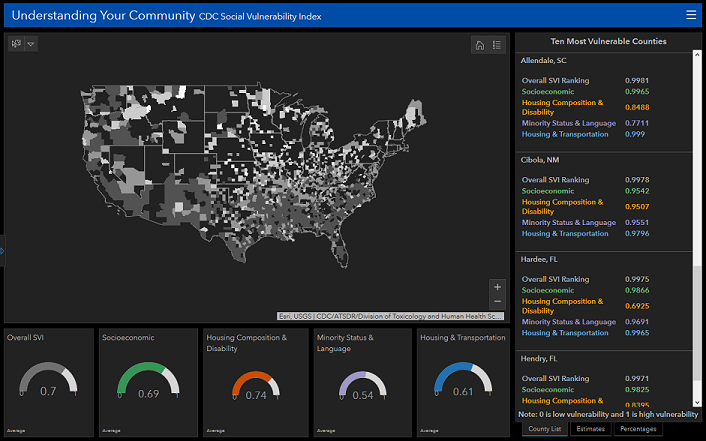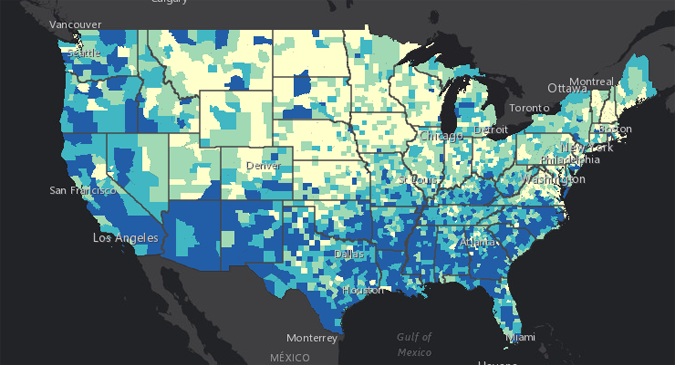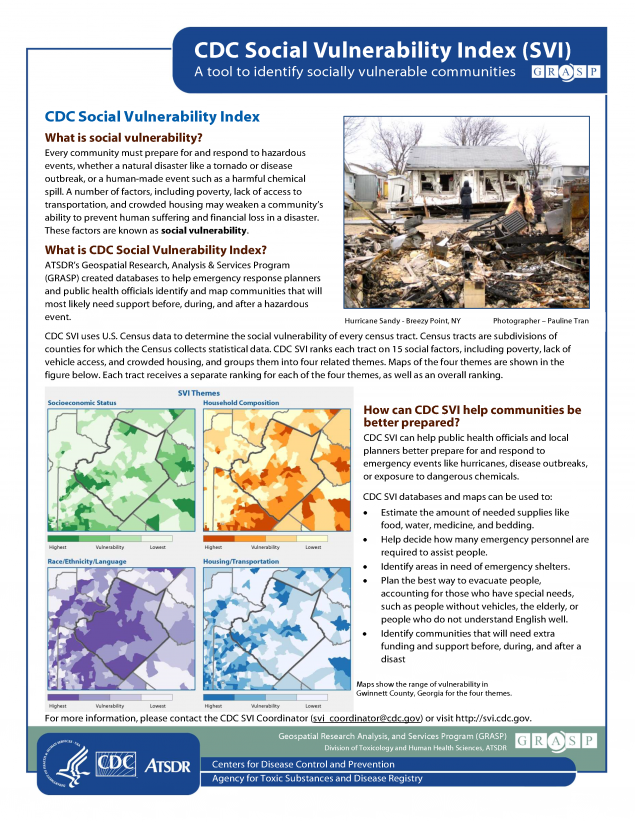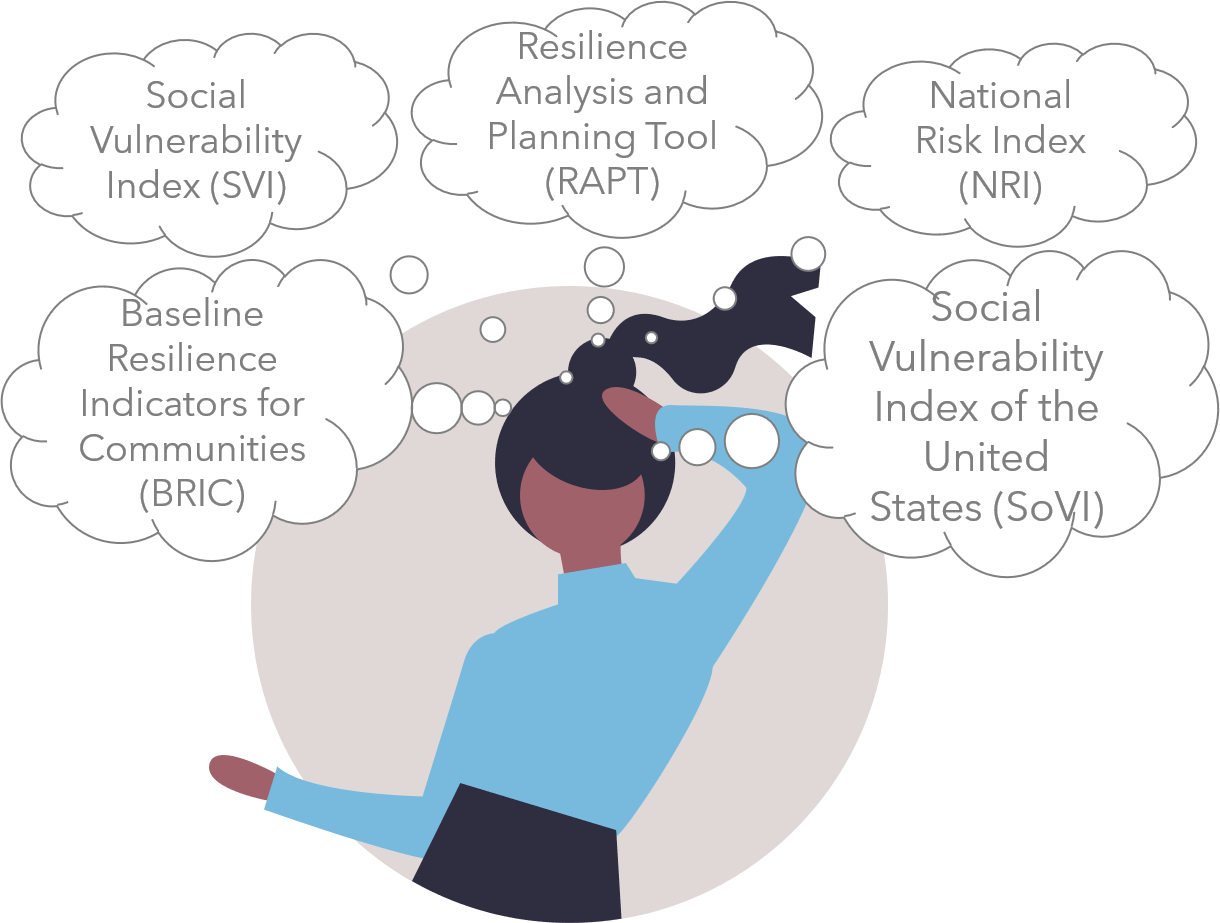

The places of our lives – our homes, workplaces, schools, parks, and houses of worship – affect the quality of our health and influence our experience with disease and well-being. Geospatial science, geographic information systems (GIS), and cartographic visualization provide important concepts, methods, and tools equipping public health scientists to examine, characterize, and analyze the important relationship between our health and the places of our lives.
As part of its work, GRASP has proposed and is shaping a framework, the Geospatial Determinants of Health (GDOH), that articulates the many and varied geospatial drivers that influence disease prevalence and promote health. The GDOH are at work in multiple environments where we experience health, including the natural environment, built environment, population connectivity environment, social and behavioral environment, and health policy environment. The emerging purpose of the GDOH is to (1) define the geospatial drivers of health with an emphasis on factors that vary by place, (2) serve as a catalyst to define, promote, and advance the use of place in research and practice across the public health community, (3) shape the public health curriculum of schools across the United States to advance geospatial analysis, statistics, and technology in the study of public health.
Natural Environment
The natural environment is the setting where we live, and it includes the air, land, water, plants and animals around us. Environmental contamination, catastrophes, and naturally-occurring compounds have been linked to disease, injury, and complications of chronic conditions.
Built Environment
The built environment is the human-made or modified environment where we live. The built environment includes the buildings in which we work and learn, the parks in which we exercise, the roads and transportation systems we use to travel from place to place, as well as the water distribution systems, electrical grids, and mobile and broadband networks we use to access information and stay connected. Characteristics of the built environment may limit our access to healthcare, healthy food, clean water, and safe places for physical activity.
https://www.atsdr.cdc.gov/placeandhealth/howdoesPlaceaffectHealth.html
____________________________________________________________________________
MORE >








No comments:
Post a Comment